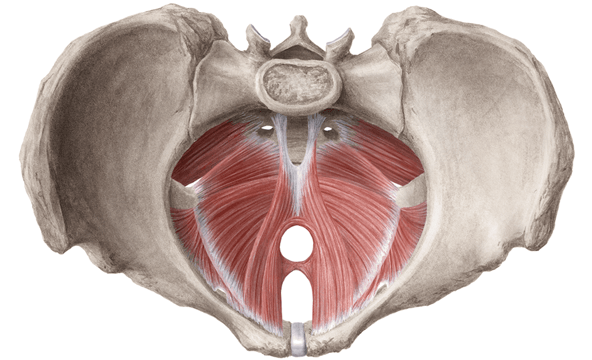
A Peek into Your Pelvic Floor (Mom's version)


Ah, the pelvic floor—a part of our body that often goes unnoticed until we're pregnant, postpartum, or suddenly bombarded by information on social media. Speaking of which, I'm incredibly grateful for the wealth of knowledge shared by pregnancy and postpartum educators on platforms like Instagram and Facebook. They fill a gap that often exists in the information we receive from general practitioners, OBGYNs, or even midwives. I didn’t personally receive any information from my midwife about my pelvic floor. In fact, my own graduate research revealed that many women first learned about issues like diastasis recti and pelvic floor dysfunction through social media. But, as you've likely discovered, navigating this sea of information can be overwhelming, and not all of it is accurate or applicable to your unique situation.
Now, let's dive into the world of your pelvic floor. Your pelvic floor is composed of ligaments, muscles, and fascia—components that work together to support various functions in your pelvic region. Scientists, doctors, and researchers often categorize these components into compartments based on their location, either from superficial to deep or from front to back. For our discussion's sake, we'll go with the latter. The anterior compartment consists of the bladder and urethra, the middle compartment houses the vagina and uterus, and the posterior compartment includes the anus and rectum. Each compartment plays a distinct role in your pelvic floor, and understanding this division is crucial when you embark on the journey of healing and strengthening it. Why? Because making neural connections to these specific parts of your pelvic floor is essential. Imagine you're dealing with weakness in the anterior compartment but tightness in the posterior compartment. Where you focus your intention can make all the difference in your recovery. It’s cool, seriously! Our bodies are AMAZING!
The roles and responsibilities of the pelvic floor are vast and include:
Supporting Internal Organs: It's the pelvic floor's job to keep your internal organs where they belong.
Managing Urinary and Fecal Functions: These muscles help maintain control over bathroom habits.
Influencing Sexual Functions: Yep, they play a role in your sexual health and pleasure.
Childbirth Assistance: During childbirth, the pelvic floor does much of the heavy lifting.
Stabilizing the Trunk and Pelvis: Essential for maintaining posture and stability.
Aiding Respiration: Surprisingly, the pelvic floor even helps with breathing!
Unfortunately, there's a downside. Pelvic floor disorders can disrupt these vital functions and lead to issues like incontinence, pelvic organ prolapse, chronic pelvic pain, painful intercourse, menstrual discomfort, vulva pain, constipation, and more.
Pelvic floor dysfunction can be triggered by both physical and psychological stress. (The topic of "psychological stress and pelvic floor health" deserves its own post—check it out here.) You can experience dysfunction due to weak or overly tight muscles, affecting one compartment or multiple. Pregnancy, childbirth, age, hormones—these are just a few factors that can impact the health of your pelvic floor. Thanks to the magical (seriously) kinetic chain connecting our head to our feet, the pelvic floor's health influences the function of our entire body, and vice versa. Given the multitude of causes and contributing factors, it's crucial to work with a professional who can address your individual needs.
